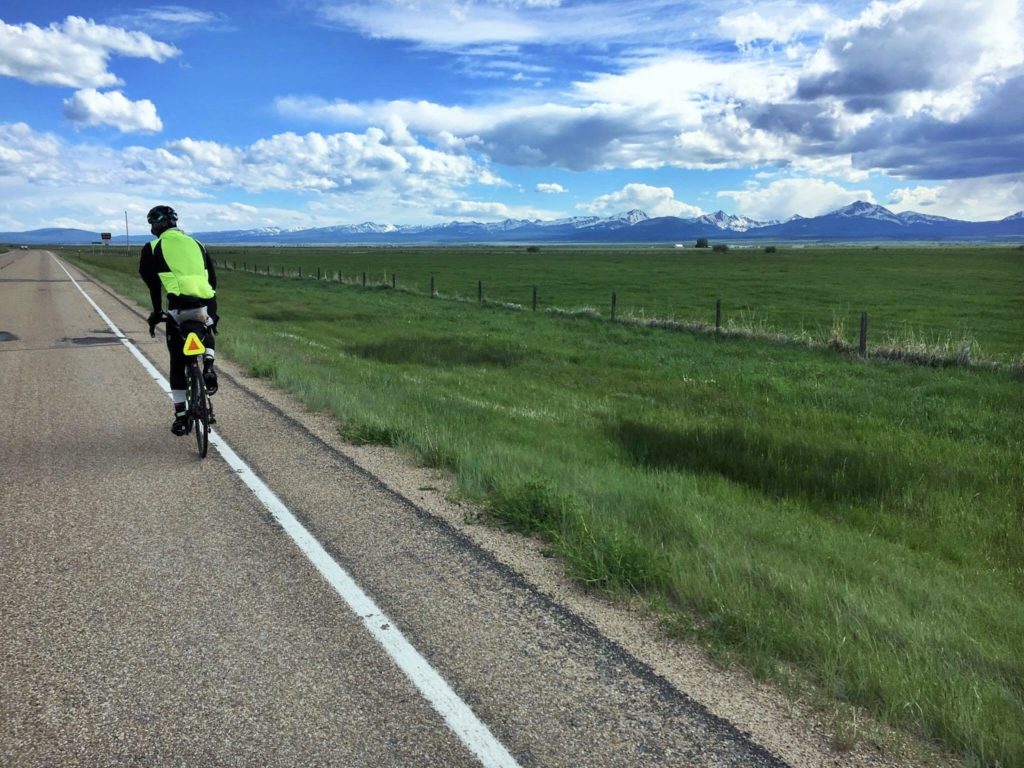I glided quietly into the darkness. Sunset slowly disappearing behind me, I pressed on—this was a race. Having cycled 2,000 miles through the temperate Cascade and Rocky Mountains, I needed to change my strategy for the Great Plains. The flatlands were windy and hot, especially in the afternoons. Shade was rare and clouds even rarer. I decided to ride at night.
Night-riding is nerve-racking at first—rush-hour traffic, shifting shadows, dwindling resupply points. But after families return home for dinner, after the sun sets and shadows sleep, another world appears. Stars fill the sky. Deer feed quietly in the fields nearby. Crickets and toads sing an evening tune. And the fireflies! So shy and subtle at first. Then there are hundreds, and then thousands and then tens of thousands. Entire fields pulsate with light and life. Several landed on my florescent cycling jersey, and I began to glow with them. It was magic.
This was only one of many mesmerizing moments I experienced while competing in the 4,266-mile Trans Am Bike Race in June. Having recently completed a three-year service in Ecuador as a business and natural resources volunteer with the Peace Corps, I was eager to explore the states again before beginning graduate classes at Ross and SEAS this fall. This “welcome home” cross-country cycling adventure offered several teaching points in the area of sustainability. Here are three:
- People protect what they love. From surfers on the Pacific Coast to ranchers in Wyoming, from farmers throughout Kansas to eco-tour operator
 s in the Appalachians, each spoke passionately about his or her corner of the world and the desire to preserve his or her way of life. The environmental movement often is painted as the “live with less” movement, one that focuses on conservation to the exclusion of culture or preserving livelihoods. But this won’t work. We need to integrate sustenance with sustainability. We need to position the conservation movement around people’s self-interest.
s in the Appalachians, each spoke passionately about his or her corner of the world and the desire to preserve his or her way of life. The environmental movement often is painted as the “live with less” movement, one that focuses on conservation to the exclusion of culture or preserving livelihoods. But this won’t work. We need to integrate sustenance with sustainability. We need to position the conservation movement around people’s self-interest. - Money creates movement. Sure, old habits die hard, but people adapt amazingly well when money is involved. A Kansas farmer I met witnessed his community’s recent conversion from corn farms to wind farms. “It’s more profitable,” he explained. An Appalachian hostel operator, who has never hiked the Appalachian Trail, said, “This is a great industry to be in right now.” An article in a Kentucky paper reported that the coal museum was installing solar panels: “It’s cost-saving.” Money creates movement. This is at the core of what we do at the Erb Institute—advance sustainability by leveraging economic interests. I appreciated meeting ordinary Americans doing the same.
- Education (still) matters. Economic interests will always be a driving force in society, yet education needs to be front and center as well. What’s at the heart of education? Curiosity, creativity and an adventurous spirit. Kids have these qualities in abundance and always will. Camping under the stars, eating wild mulberries, catching fireflies (or having them catch you)—these emotionally binding experiences in nature have the power to shape young people for the rest of their lives. They have the power to connect people’s deep desire for adventure and self-discovery with the cause of sustainability (see above—people protect what they love). Adventure is environmental education in disguise. And environmental education should continue to lead us toward a more sustainable world—a world still full of the potential for magical moments.

 s in the Appalachians, each spoke passionately about his or her corner of the world and the desire to preserve his or her way of life. The environmental movement often is painted as the “live with less” movement, one that focuses on conservation to the exclusion of culture or preserving livelihoods. But this won’t work. We need to integrate sustenance with sustainability. We need to position the conservation movement around people’s self-interest.
s in the Appalachians, each spoke passionately about his or her corner of the world and the desire to preserve his or her way of life. The environmental movement often is painted as the “live with less” movement, one that focuses on conservation to the exclusion of culture or preserving livelihoods. But this won’t work. We need to integrate sustenance with sustainability. We need to position the conservation movement around people’s self-interest.